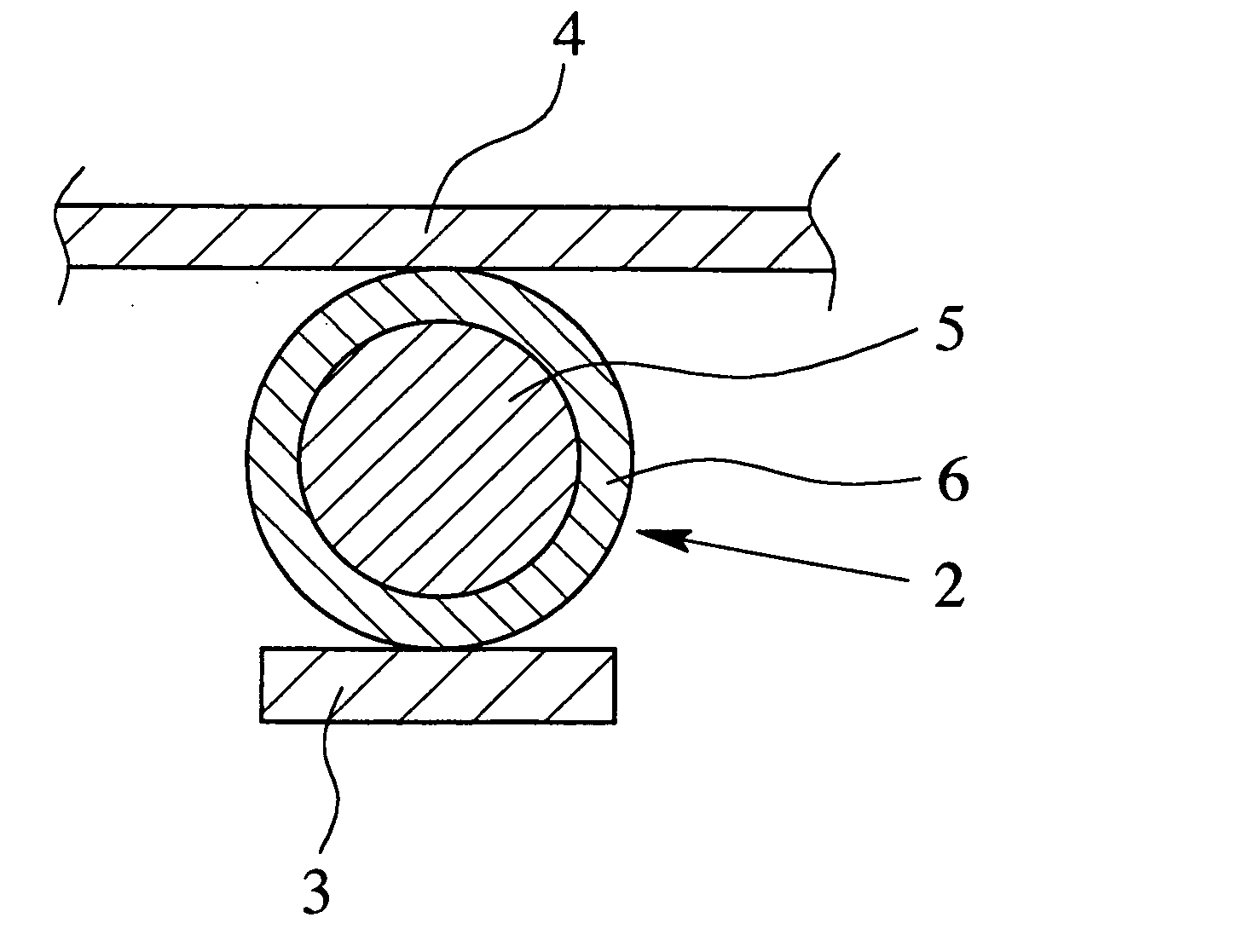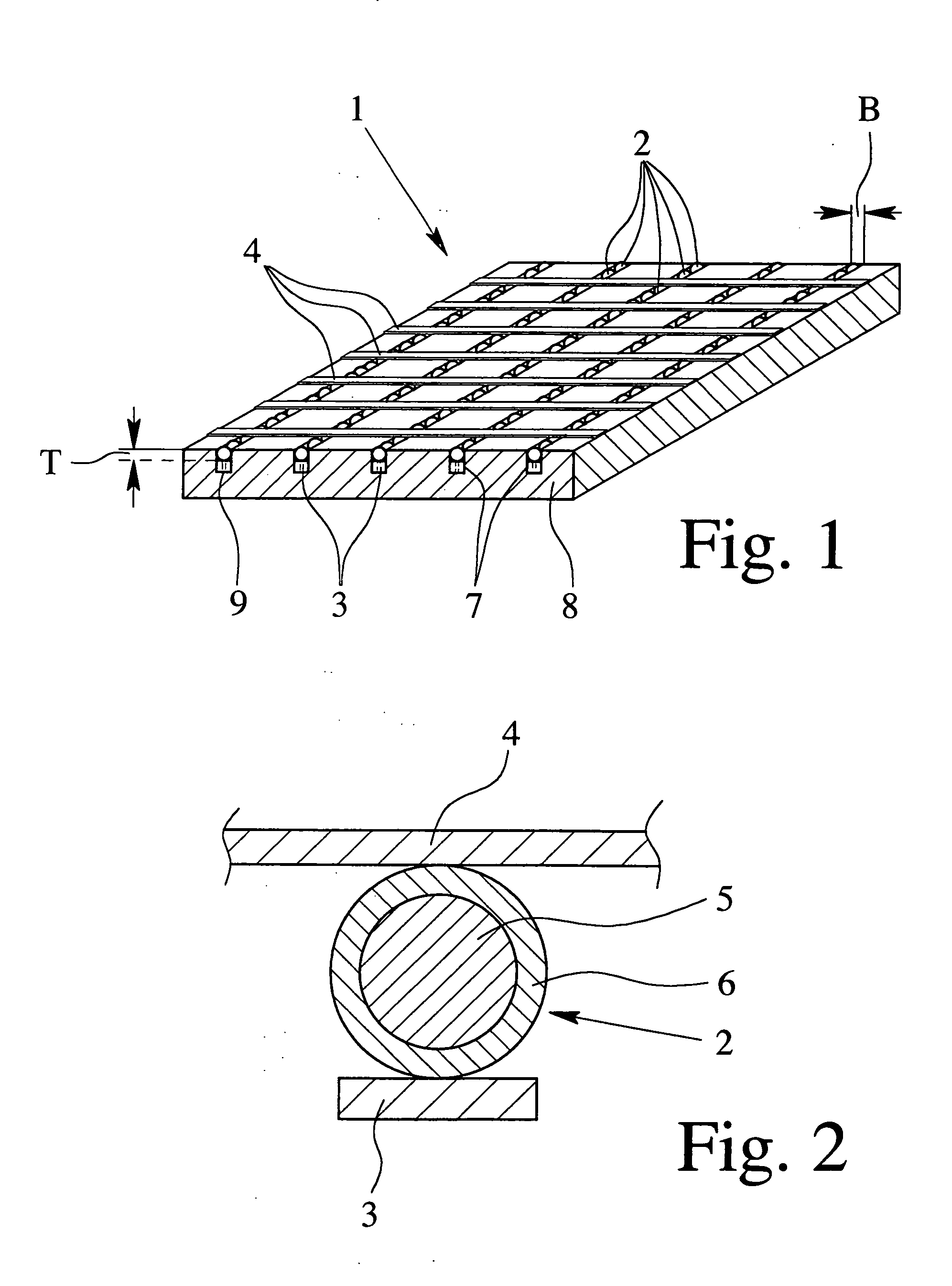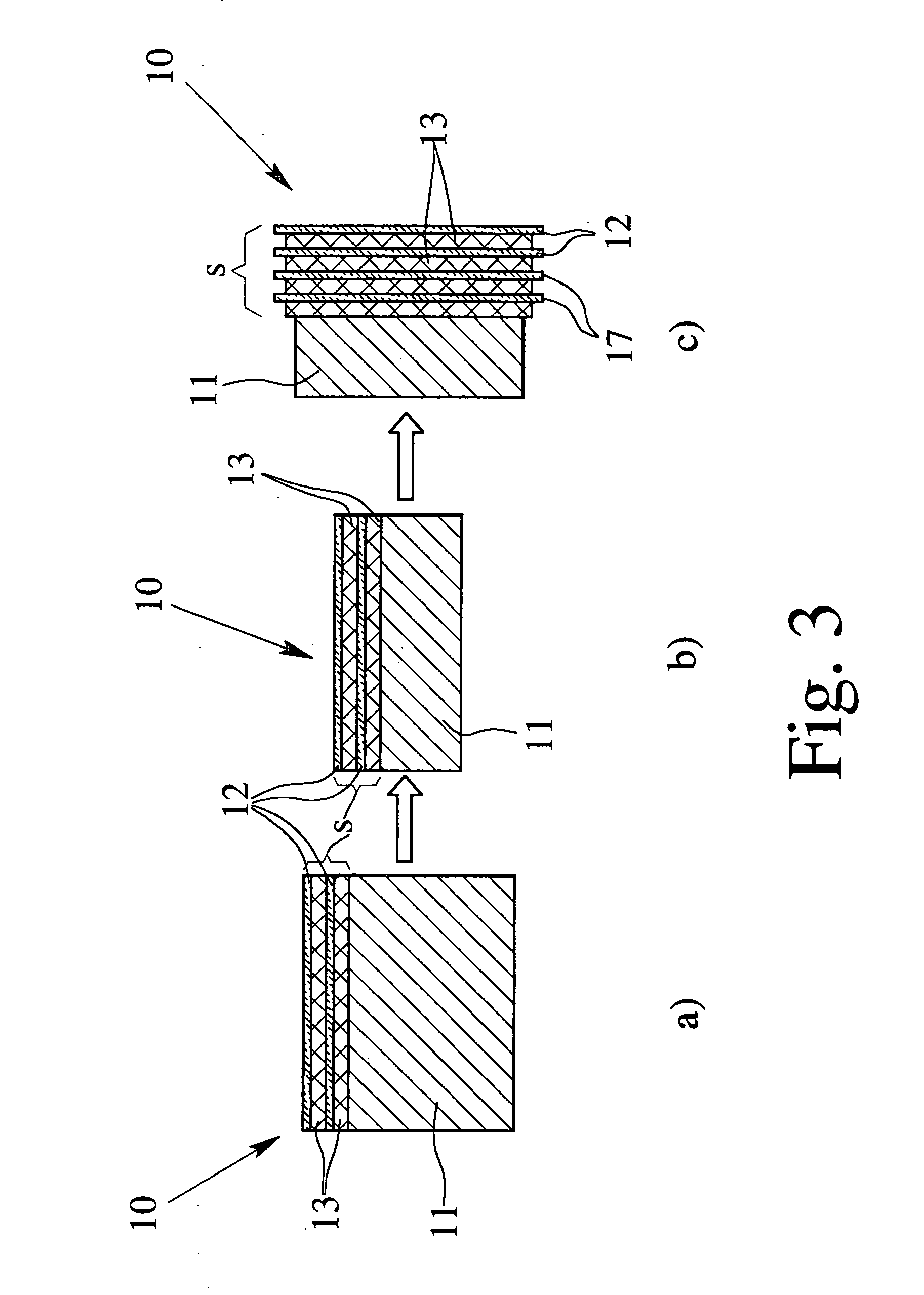Micro electronic component
a technology of electronic components and components, applied in the field of microelectronic components, can solve problems such as defective connections, and achieve the effect of simple bonding and simple design
- Summary
- Abstract
- Description
- Claims
- Application Information
AI Technical Summary
Benefits of technology
Problems solved by technology
Method used
Image
Examples
first embodiment
[0029]FIG. 1 shows in a schematic, perspective illustration a microelectronic component 1 according to a In particular, this embodiment concerns an electronic memory with a plurality of memory cells or transistors, preferably single-electron transistors. However, the microelectronic component 1 can also be used for other purposes.
[0030] The microelectronic component 1 has a plurality of clusters 2, which are shown in FIG. 1 in the shape of balls.
[0031] The microelectronic component 1 further has first and second connecting electrodes 3, 4 for electrical attachment or contact to clusters 2. This will be discussed in more detail below.
[0032]FIG. 2 shows in a schematic, sectional illustration the preferred design of a cluster 2. The cluster 2 has a metallic cluster nucleus 5 and a preferably electrically insulating cluster shell 6.
[0033] The cluster nucleus 5 is preferably composed of a transition metal, especially gold. Each cluster nucleus 5 comprises several metal atoms, especia...
second embodiment
[0056] The mentioned width B for the second connecting electrodes 4 also applies preferably for the first connecting electrodes 3, especially when the clusters 2 are arranged on freely accessible first connecting electrodes 3, that is, not in the grooves 7, as explained farther below for the present invention.
[0057] As already explained in the introduction, for the shown embodiment, not all of the clusters 2 are contacted, instead only those in the region of the intersecting points between the first and second connecting electrodes 3, 4. The other, non-contacted clusters 2 are then non-critical components for the function of the microelectronic component 1, especially if there are several non-connected clusters 2 in the groove 7 between two adjacent, connected clusters 2 in a groove 7.
[0058] Naturally, as an alternative or addition, it is also possible for no other clusters 2 to be arranged between the connected clusters 2 in a groove 7 or for the chain of clusters 2 to be broken, ...
PUM
 Login to View More
Login to View More Abstract
Description
Claims
Application Information
 Login to View More
Login to View More - R&D
- Intellectual Property
- Life Sciences
- Materials
- Tech Scout
- Unparalleled Data Quality
- Higher Quality Content
- 60% Fewer Hallucinations
Browse by: Latest US Patents, China's latest patents, Technical Efficacy Thesaurus, Application Domain, Technology Topic, Popular Technical Reports.
© 2025 PatSnap. All rights reserved.Legal|Privacy policy|Modern Slavery Act Transparency Statement|Sitemap|About US| Contact US: help@patsnap.com



